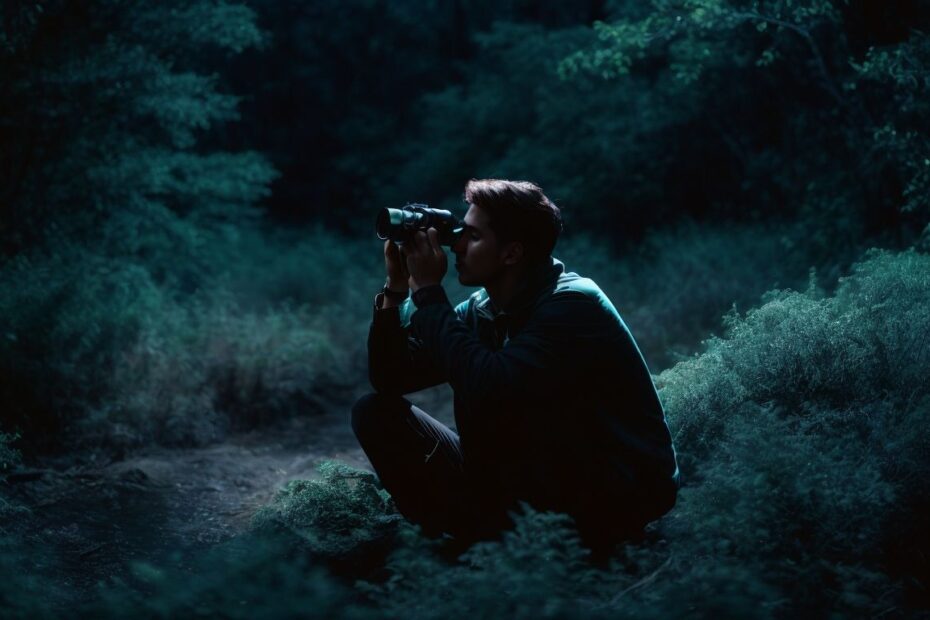What Are the Benefits of Using Night Vision Binoculars for Wildlife Observation?
When it comes to observing wildlife at night, having the right equipment can make all the difference. In this section, we will explore the benefits of using night vision binoculars for wildlife observation. These specialized binoculars offer a range of advantages that enhance the overall experience of observing animals under low light conditions. From increased visibility to improved clarity, we’ll take a closer look at how night vision binoculars can enhance your wildlife viewing experience.
1. Enhanced Visibility in Low Light Conditions
Enhanced visibility in low light conditions is one of the main benefits of using night vision binoculars for observing wildlife. To fully take advantage of this feature, follow these steps:
- Adjust the brightness settings on your binoculars to optimize visibility without causing eye strain.
- Utilize the built-in infrared illuminator to enhance visibility in complete darkness.
- Scan the area slowly and thoroughly, with a focus on areas with minimal ambient light.
- Pay close attention to any movement or shapes in the distance, as night vision binoculars are capable of amplifying subtle details.
2. Increased Range of Detection
- Choose night vision binoculars with a higher magnification power to increase the range of detection.
- Look for binoculars with a larger objective lens size, as it allows more light to enter and improves visibility in low light conditions.
- Consider binoculars with advanced night vision technology like thermal imaging, which can detect heat signatures and provide a clearer image.
- Ensure that the binoculars are durable and waterproof, especially if you plan on using them in outdoor environments.
Pro-tip: When using night vision binoculars, scan the area systematically and slowly to maximize your chances of spotting wildlife in the increased range of detection.
3. Improved Clarity and Detail
Improved clarity and detail are key benefits of using night vision binoculars for wildlife observation. To achieve the best results, follow these steps:
- Choose binoculars with high resolution and advanced image processing technology for improved clarity and detail.
- Adjust the focus and diopter settings to achieve sharp and clear images.
- Use a tripod or stabilizing device to minimize hand movements and ensure steady viewing.
- Avoid using the binoculars in bright light conditions, as it can degrade image quality and clarity.
4. Hands-Free Operation
Hands-free operation is a key benefit of using night vision binoculars for wildlife observation. Here are some steps to achieve hands-free operation:
- Attach the binoculars to a tripod or monopod for stability.
- Use a binocular harness or chest rig to secure the binoculars to your body.
- Utilize a headlamp or head-mounted flashlight for hands-free illumination.
- Consider using a binocular mount or adapter to connect the binoculars to a spotting scope or camera.
Remember, hands-free operation allows for more comfort and convenience during extended wildlife observation sessions.
What Are the Factors to Consider When Choosing Night Vision Binoculars for Wildlife Observation?
When it comes to observing wildlife in low light conditions, night vision binoculars can be an invaluable tool. However, not all night vision binoculars are created equal, and there are several factors to consider when choosing the right one for your needs. In this section, we will discuss the key elements to keep in mind when selecting night vision binoculars for wildlife observation. From magnification and objective lens size to the type of night vision technology and durability, we will cover everything you need to know to make an informed decision. Let’s dive in!
1. Magnification and Objective Lens Size
When selecting night vision binoculars for observing wildlife, it is crucial to consider both the magnification and objective lens size. To help you make the right decision, follow these steps:
- Determine your specific viewing needs and preferences, such as the desired distance for observing wildlife and the level of detail you want to see.
- Remember that magnification determines how much closer objects appear, while objective lens size affects the amount of light the binoculars can gather.
- Find a balance between higher magnification and larger objective lens size for the best overall performance.
- Keep in mind that higher magnification may result in a narrower field of view, making it more difficult to locate and track wildlife.
Night vision technology has significantly evolved since its creation in the early twentieth century. Originally designed for military use, it is now widely available for civilian purposes, including wildlife observation. The advancements in magnification and objective lens size have transformed the way we explore and appreciate the natural world in low light conditions.
2. Type of Night Vision Technology
There are three main types of night vision technology used in binoculars:
- Image Intensifier Binoculars: These binoculars amplify available light to enhance visibility in low-light conditions.
- Thermal Imaging Binoculars: These binoculars detect heat signatures to create an image, allowing you to see objects even in complete darkness.
- Digital Night Vision Binoculars: These binoculars use digital sensors and processors to capture and enhance images in low-light situations.
Each type has its own advantages and disadvantages, so consider your specific needs and budget when choosing the right type of night vision binoculars for wildlife observation.
True story: A wildlife enthusiast used thermal imaging binoculars to observe nocturnal animals in a dense forest. The binoculars helped them detect hidden animals and capture stunning images in complete darkness, providing a unique and immersive wildlife observation experience.
3. Durability and Waterproofing
Durability and waterproofing are essential factors to consider when selecting night vision binoculars for wildlife observation. Here are some steps to keep in mind:
- Look for binoculars with a sturdy construction, preferably made from durable materials like magnesium alloy.
- Check for an IPX rating to ensure water resistance. Higher ratings, such as IPX7 or IPX8, provide better protection against water damage.
- Consider nitrogen purging or O-ring sealing to prevent internal fogging and moisture damage.
- Choose binoculars with rubber armor or a rugged exterior for added protection against drops and impacts.
Remember, investing in durable and waterproof night vision binoculars will guarantee long-lasting performance and reliability in challenging outdoor conditions.
4. Budget
When creating a budget for night vision binoculars for wildlife observation, it’s important to strike a balance between affordability and quality. To help you make a budget-friendly choice, here are some steps to follow:
- Research different brands and models to compare prices.
- Determine your specific needs and prioritize features accordingly.
- Consider purchasing from reputable sellers who offer warranties or return policies.
- Look for any available deals or discounts, such as sales or promotions.
- Read customer reviews to assess the performance and reliability of the binoculars within your budget.
How to Properly Use Night Vision Binoculars for Wildlife Observation?
Night vision binoculars are a powerful tool for observing wildlife in low light conditions. However, in order to get the most out of this equipment, it is important to know how to properly use them. In this section, we will discuss four key steps to using night vision binoculars for wildlife observation. From familiarizing yourself with the controls to avoiding bright light, we’ll cover everything you need to know to enhance your viewing experience.
1. Familiarize Yourself with the Controls
Familiarizing yourself with the controls of night vision binoculars is crucial for optimal usage. Here are some important steps to follow:
- Read the instruction manual thoroughly to understand the functions and features of your binoculars.
- Identify the control buttons and switches, such as power on/off, image brightness adjustment, and focus adjustment.
- Practice using the controls in a well-lit area before heading out into the field to familiarize yourself with their operation.
- Learn how to switch between different modes, such as black and white or green tinted images.
By mastering the controls, you can maximize the performance of your night vision binoculars and enhance your wildlife observation experience.
2. Adjust the Focus and Diopter Settings
To optimize your viewing experience with night vision binoculars, follow these steps to adjust the focus and diopter settings:
- Locate the focus wheel or knob on your binoculars.
- Rotate the focus wheel in a clockwise or counterclockwise direction to adjust the focus until the image appears clear and sharp.
- If your binoculars have a diopter adjustment, find the diopter knob.
- Using your right eye, look through the right eyepiece and adjust the diopter knob until the image appears clear and focused.
- Repeat the process with your left eye to adjust the diopter settings for optimal viewing.
- Once both the focus and diopter settings are adjusted, you can enjoy a clear and focused view through your night vision binoculars.
3. Use a Tripod for Steady Viewing
Using a tripod is crucial for achieving steady and stable views when using night vision binoculars for wildlife observation. Here are some steps to follow:
- Set up the tripod on a stable surface, making sure it is securely positioned.
- Attach the binoculars to the tripod mount using the appropriate adapter or mount.
- Adjust the tripod’s legs and height to a comfortable viewing position.
- Utilize the tripod’s pan and tilt controls to precisely aim and track wildlife.
By utilizing a tripod, you can minimize hand shake and vibrations, allowing for clearer and more focused observations of wildlife in low-light conditions.
4. Avoid Using in Bright Light Conditions
Using night vision binoculars in bright light conditions can harm the device and diminish its effectiveness. To ensure long-lasting performance, follow these steps:
- Avoid using the binoculars in direct sunlight or under bright artificial lights.
- If you need to observe in well-lit areas, use the built-in brightness control or adjust the gain settings to minimize the impact of the light.
- Consider using a lens cover or filter to reduce excessive light entering the binoculars.
- When not in use, store the binoculars in a protective case or in a dark environment to prevent unnecessary exposure to bright light.
By taking these precautions, you can extend the lifespan of your night vision binoculars and ensure they continue to provide optimal performance in low light conditions.

From the gentle rustling of leaves to the distant chirping of birds, the outdoors has always been my sanctuary. With an innate love for nature, I find solace in the embrace of the wilderness. Whether hiking up scenic trails or simply taking a stroll in the park, the outside world offers endless wonders to discover.
But of all the outdoor activities, bird watching is special. Armed with a trusty pair of binoculars, I spent countless hours observing the magnificent dance of birds in their natural habitat. The thrill of spotting a rare species or simply appreciating the beauty of common birds in action is an experience that never gets old.
For me, binoculars are more than just an optical tool; they are a gateway to a world often overlooked. Every glance through those lenses is an opportunity to connect, learn, and be mesmerized by the avian wonders of our world.

